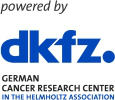Description
Gliosarcoma is a rare and aggressive variant of glioblastoma, accounting for approximately 2% of all cases. Although it exhibits distinct histopathological and clinical features, it is currently managed using the same therapeutic strategies as glioblastoma and carries a similarly poor prognosis. In this study, we utilize single-cell RNA sequencing and spatial transcriptomics to investigate the molecular drivers underlying the formation of sarcomatous niches, which we hypothesize contribute to the unique clinical behavior of gliosarcoma. Preliminary findings reveal a distinct sarcomatous tumor cell phenotype absent in conventional glioblastoma, characterized by an enriched microenvironment of stromal and endothelial cells and elevated TGF-β signaling. By elucidating the cell–cell communication networks and signaling pathways specific to these niches, our aim is to uncover novel insights into gliosarcoma pathogenesis and identify potential therapeutic targets.
| Preferred type of presentation | Poster Presentation only |
|---|

